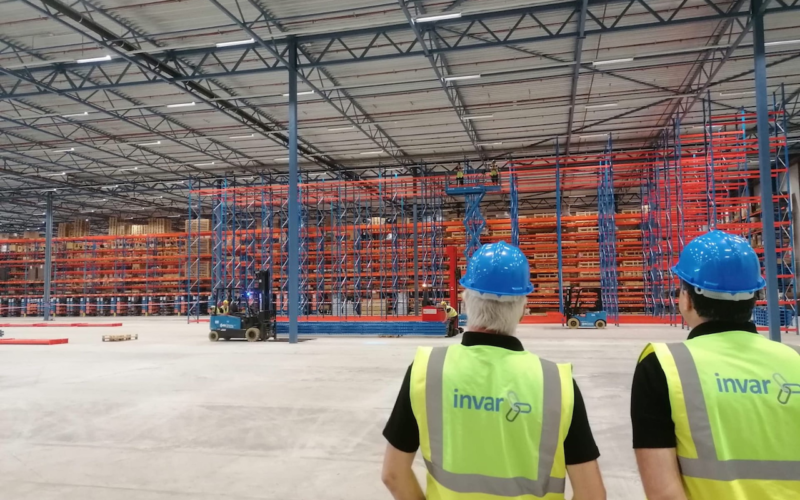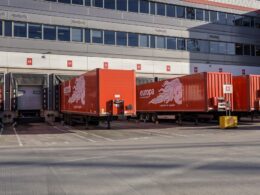Sponsored Content
With labour hard to find and performance at peak under scrutiny, businesses may be tempted to opt for a complete, turnkey warehouse automation project to solve all their problems in one move. But might a stepped approach make more sense? Dan Migliozzi, Head of Sales at independent systems integrator, Invar Group, considers the options.
There can be little doubt that automation is the future for all but the smallest of warehouse operations. New affordable technologies are now within reach of most small to medium sized businesses (SMEs) and these technologies, often involving robotics and AI, are transforming performance across intralogistics processes.
Driven by poor labour availability and increasing customer demands, many businesses will be thinking about a comprehensive review of their operations, and may be tempted to go for a full turnkey approach – introducing a whole raft of systems at the same time. However, whilst this may be appropriate for some companies, others may be exposing themselves to unnecessary levels of risk, and a more considered approach could yield greater gains.
For a major corporation with the luxury of multiple warehouses or distribution centres, and facing challenges or changes to their current operational model, it may be practical, even desirable, to take facilities off-line one by one and rebuild them. For smaller businesses though, this could be a highly risky strategy and may be unviable – a considered, step-by-step approach to the end goal of significant automation may be preferable, both financially and operationally.
Financial benefits
Financially, moving towards automation in planned stages limits the need for often significant up-front capital expenditure, a particular concern for start-ups and other companies in a phase of rapid growth when other demands on working capital can be considerable. A stepped approach that quickly takes advantage of ‘low hanging fruit’ can achieve an early Return on Investment and bring many other benefits – potentially helping to fund subsequent phases of automation.
But even if capital funding isn’t an issue, the risks of an ‘all-in’ approach are significant. Some degree of disruption is inevitable during installation, and even with the most careful planning, highest quality equipment and dedicated vendors and integrators, it’s rare for everything to work straight out of the box. The risk of a major delay or disruption could have a far-reaching impact on the business and may lead to lost sales and reputational damage.
A further consideration is, with a complete turnkey approach it’s usually not possible to revert to the old ways of working while the fixes are actioned. There is no redundancy in this situation.
So rather than playing with the entire operation in a giant sandbox, better by far to identify and address the most urgent or compelling challenges and opportunities as they arise. That way, processes can be better defined and understood, employees at all levels trained and other necessary capabilities – maintenance, for example – built up at a manageable pace.
Planning a phased migration
‘Step-by-step’, however, does not mean ‘piecemeal’. The planning for a stepped migration to more automated operations is just the same as it would be for a turnkey project – indeed the ultimate goals will be just the same – it’s merely a question of how to get there.
Firstly, and obviously, the company needs to know its objectives and requirements. Is automation needed because the business is in, or is anticipating, a period of rapid growth? Growth is good, but for many companies, perhaps in a mature or niche market, higher volumes and throughputs may not be the issue – greater efficiencies, lower costs and perhaps particularly better use of scarce labour may be the imperatives.
The company needs to map and understand its processes from cradle to grave, including processes which are unlikely to be directly addressed by automation. Where are the biggest wins, the greatest challenges, the most acute pain points? Address these first – paradoxically, trying to optimise a process that you know to be already very good often carries a larger downside risk.
Consider scaleability
But the automation plan can’t just address short term issues. The business may need to consider the extent to which the automation is scaleable – can a robotic installation, for example, be scaled up for future growth just by leasing more units, or will there be a point at which the racking and other physical attributes of the warehouse require major change? And if so, should that be done now, even though it may not be needed for some years?
The plan also needs to consider the pace of technological change. Evolution in fields such as robotics is lightning-fast. There is no shame in buying last year’s model if it does the job, but there are risks that equipment and systems may become ‘obsolete’, or worse, unsupported, much quicker than expected. This means that some of the steps in the automation road map may need to cover replacing or upgrading earlier and relatively recent investment steps. Robust continuity planning, in partnership with reputable vendors and integrators, is key.
Planning a stepped approach to warehouse automation cannot be just a top down, or a bottom up, process. It really does require the involvement of every stakeholder in the business. Clearly it needs high level strategic direction to ensure that the plan is aligned with the company’s goals, its financial capacity, and its appetite for risk. Operational input – will the proposals actually meet the requirements of, for example, seasonal peaks. Engineering – does the business have, or can it expect to establish, an adequate maintenance capability or will this have to be outsourced. HR may have views on how staff can be trained, and whether new staff with new skills need to be hired.
Technical capabilities
And then there is installation. Even quite modest steps in automation are likely to involve systems and equipment from multiple manufacturers and vendors and will require some level of integration, both with each other and with existing equipment and systems. ‘Plug and play’ is a much-vaunted term, but it’s hard to find evidence that it really exists in the modern warehouse!
Therefore, it’s important to find a reliable, independent integrator that has the necessary technical capability and in-house software skills to deliver a project successfully over several planned stages – an integrator that supports you every step of the journey.
Further independent advice on transforming operational performance in the warehouse can be found at: www.Invargroup.com













